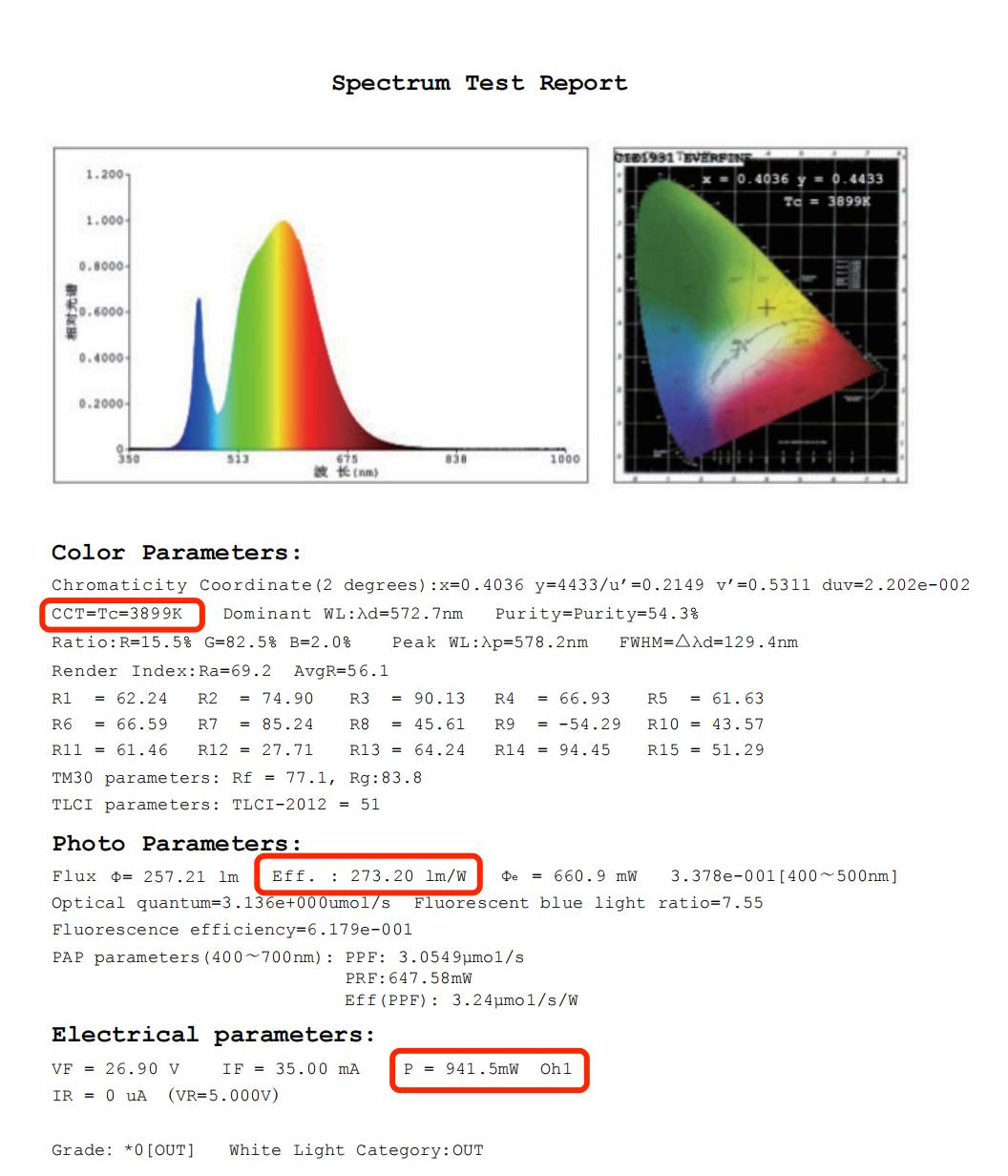SOKOYO always had a very professional customer base. Regarding the maximum luminous efficiency that LED lighting products can achieve in mass production, industry experts have provided the following professional opinions:
Firstly, it needs to be clarified that the luminous efficiency of LED outdoor lighting fixtures is directly related to the efficiency of the LED chips. Taking the current highest luminous efficiency of chips (LEDs) as an example, the test results for the luminous efficiency of a single chip are as follows:

Secondly, the calculation of module luminous efficiency (excluding power supply):
The cold-state luminous efficiency of the chip is 273 lumens per watt (lm/W). (The luminous efficiency of LED light sources decreases with increasing temperature. The luminous efficiency tested under instant lighting conditions at room temperature is referred to as cold-state luminous efficiency.)
After the module is illuminated and stabilized, as the temperature rises, the luminous efficiency decreases by 8%. Therefore, the luminous efficiency of the chip is 273 × 0.92 = 251 lm/W.
The module products require lens light distribution. Currently, the highest quality imported optical PMMA material is used for lenses, with a transmittance of 95%. Hence, the maximum luminous efficiency of the module is 251 × 0.95 = 238 lm/W.
If it is for an AC power system, efficiency * 0.92; for a solar power system, the loss is determined by the efficiency of the controller.
Thirdly, to further improve luminous efficiency, it is possible to sacrifice other aspects of the chip's performance, such as sacrificing color tolerance, color rendering index (CRI), color temperature, etc.
Color Tolerance: It is a measure of color accuracy, usually used to evaluate the deviation of the current light source from the nominal color temperature. Color tolerance unit: SDCM. According to the GB-T17262-2002 standard for the performance requirements of single-ended fluorescent lamps, the color tolerance required for general energy-saving lamps should be less than 5 SDCM.
Color Rendering Index (CRI): The ability of a light source to render the colors of objects is referred to as color rendering. It is compared with the appearance of colors of objects under a reference or standard light source (incandescent or daylight). The higher the CRI, the better the color rendering ability of the light source and the stronger the ability to reproduce the colors of objects. The color rendering index affects students' ability to recognize object colors, preventing objects from presenting their true colors. If this condition persists, it can lead to a decline in color discrimination ability, resulting in serious vision problems such as color blindness and color weakness. Prolonged exposure to poor color rendering sources can also decrease the sensitivity of the eye's cone cells. As a result, the brain may consciously or unconsciously exert more effort in identifying objects, leading to eye fatigue and compromising safety.
Color temperature: The color of the light source is commonly expressed by the concept of color temperature. When the color of the light emitted by the light source is the same as the color of the radiation from a black body at a certain temperature, the temperature of the black body is called the color temperature of the light source. Generally, for road lighting, a color temperature of 3000K or 4000K is preferred.

Therefore, at the maximum luminous efficiency, the color tolerance of the LED light source is approximately 27 steps, with a severe greenish bias, significantly deviating from standard colors, resulting in poor sensory perception. In rainy or foggy weather conditions, visibility is further compromised, leading to safety accidents. The color rendering index is relatively low, approximately around 70, and cannot guarantee that all values are above 70, indicating weak color reproduction ability, which affects safety.
After eliminating the effects of color tolerance, color rendering index, and color temperature, the expected luminous efficiency for mass production is estimated at 214 lm/W (245 lm/W * 0.92 * 0.95).